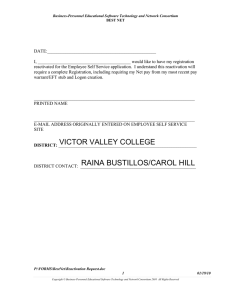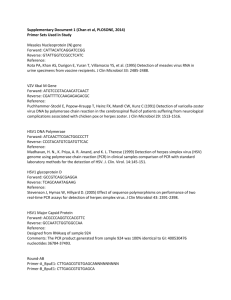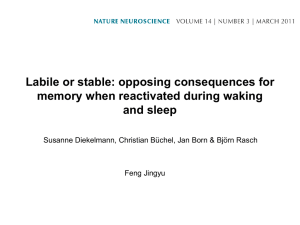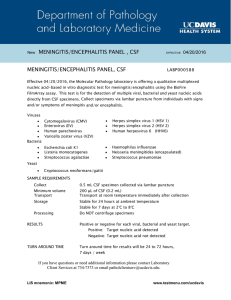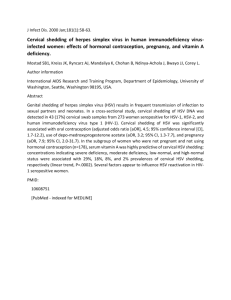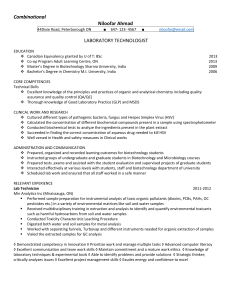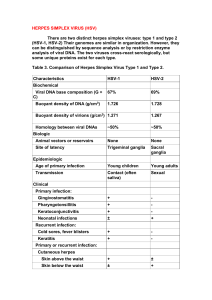Herpes simplex - biosciences
advertisement
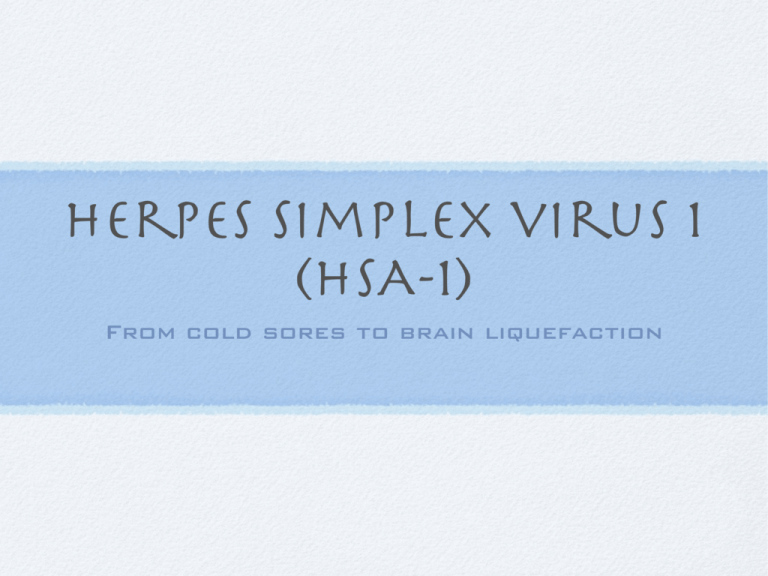
Herpes simplex virus 1 (HSA-1) From cold sores to brain liquefaction What is HSV-1 HSV-1 is a herpesvirus, one of eight that cause disease in humans Herpesviruses have a double-stranded DNA genome in an icosahedral capsid surrounded by a lipid envelope Image from http://www.bact.wisc.edu/themicrobialworld/hsv1struc.jpg Entry and spread HSV enters through mucosal surfaces but not through intact skin HSV replicates within epithelial cells and spreads locally through budding from dying cells Virus can enter nerve cells and travel retrograde to nerve cell body Latency and Reactivation HSV is latent within nerves Reactivation can be triggered by local trauma, immunosupression, UV light and “stress” Reactivation is most commonly asymptomatic and results infectious shredding of virus Herpes Simplex encephalitis UK incidence 1-3 per million population per year 90% of cases of encephalitis Two thirds are due to reactivation of latent virus 20-30% mortality with treatment 70% mortality untreated Clinical presentation Non-specific, common symptoms and signs include altered behaviour, headache, fever, seizures and altered consciousness and less commonly vomiting, hemiparesis and memory loss PCR is most sensitive and specific diagnostic test but may be negative especially early in disease Neuroimaging (EEG, CT, MRI) shows focal rather than diffuse disease pathogenesis Route of entry into brain unclear Timing of entry into brain Heamorrhagic necrosis with liquefaction of affected brain tissue Acute inflammatory response characterized by influx of mononuclear cells Treatment No prophylactic vaccine High dose aciclovir for minimum 2 weeks Triple phosphorylation initiated by virally encoded kinase Immediate phosphorylation increases diffusion of drug into infected cells DNA chain terminator
